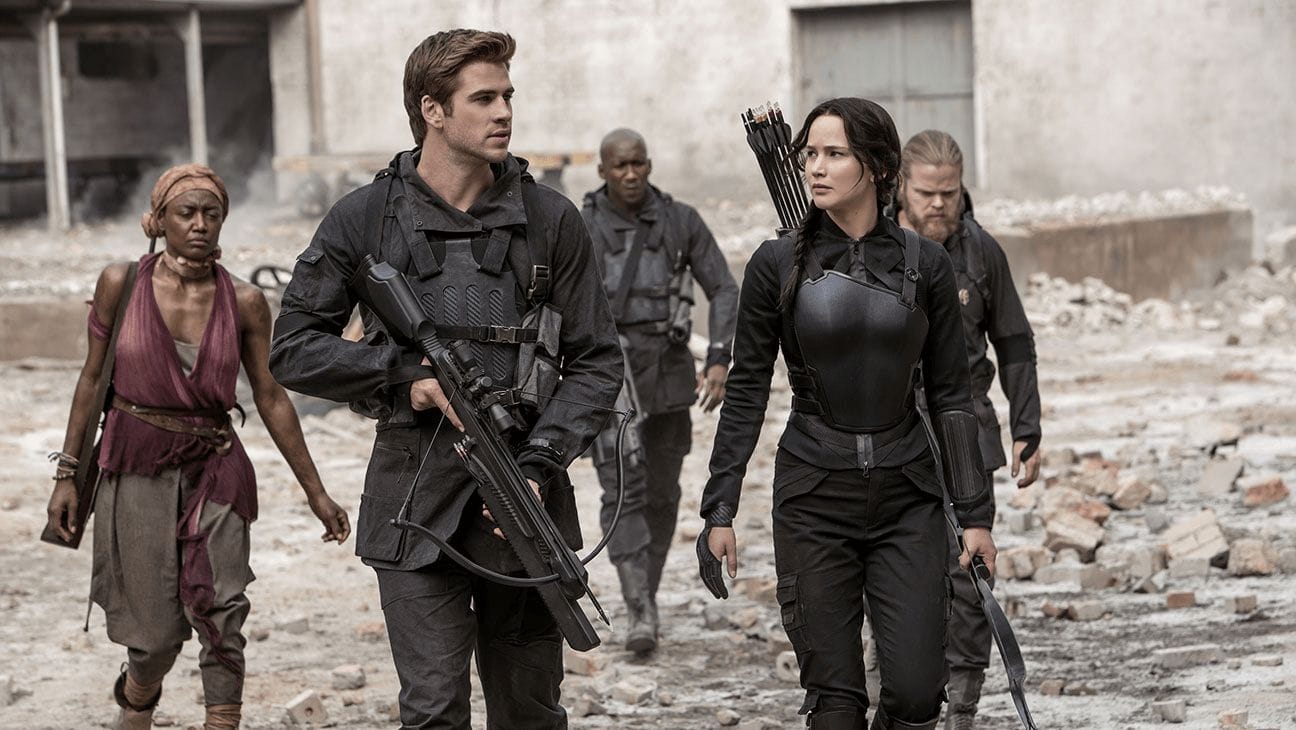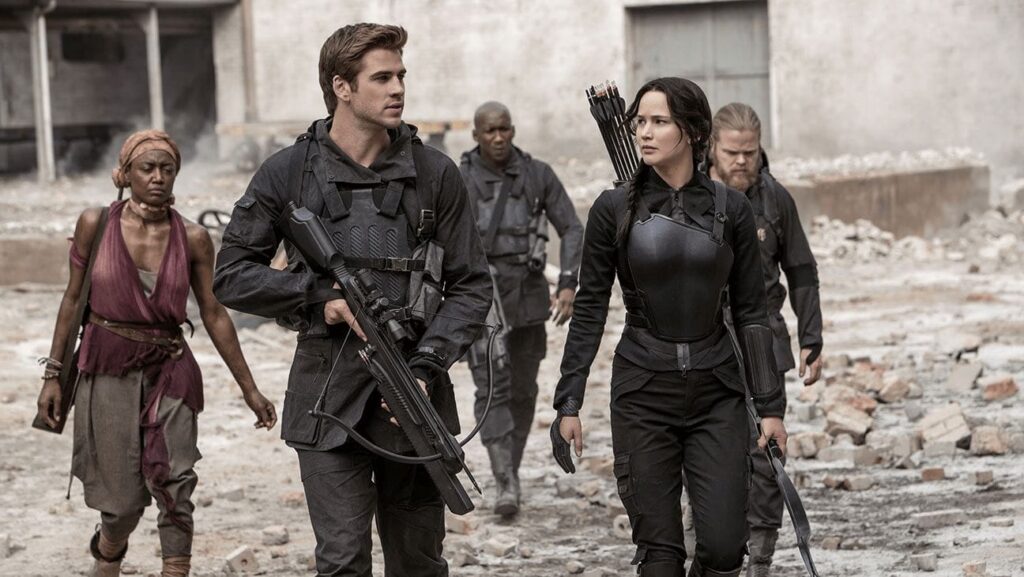Costume design is a pivotal element in the storytelling of the Hunger Games series. It’s not just about the aesthetics; the costumes build the world of Panem and offer a visual narrative that complements the script, providing depth to characters and emphasizing the societal divide. With that in mind, let’s embark on a sartorial journey through the dystopian world of Panem as we rank each Hunger Games movie by the creativity and impact of its costumes.
1. The Hunger Games Mockingjay – Part 1
The more subdued costume design in The Hunger Games: Mockingjay – Part 1 reflects the film’s darker tone with utilitarian and militaristic styles dominating the screen. When they come to District 13, they get a footlocker. Figure out what’s in that footlocker,
said director Francis Lawrence, emphasizing the standard issue for civilians. This focus on pleating, pockets, and closures, while less flamboyant than other installments, resonates with the somber atmosphere of impending war. The contrast between these simple garments and the Capitol’s exuberance is stark, highlighting the ‘trying to survive’ state of district dwellers.
2. The Hunger Games Mockingjay – Part 2
In The Hunger Games: Mockingjay – Part 2, costumes evolve to become even more symbolic. The iconic Mockingjay armor is a masterpiece of design, combining Japanese kyudo archery aesthetics with practicality. The chest plate was inspired by beautiful asymmetrical breast plates worn in Japanese kyudo archery,
highlighting Cinna’s genius as he crafts an outfit that is both a symbol of rebellion and a tactical suit for combat. The magnetic wings and cinched waist create an image of strength and resilience, perfectly embodying Katniss’s role as the face of revolution.


3. The Hunger Games Catching Fire
The Hunger Games: Catching Fire takes costume design to new heights with its diverse and elaborate ensembles. From Katniss’s transformative wedding dress to the Quarter Quell outfits, every garment adds a layer to the film’s visual storytelling. President Snow’s attempt to control Katniss through her clothing backfires spectacularly when Cinna rigs her wedding dress to reveal the mockingjay costume beneath, symbolizing her fiery spirit and defiance. The Capitol’s residents continue to dazzle with their oddly dressed people with bizarre hair and painted faces,
signaling their place atop Panem’s social hierarchy.


4. The Hunger Games (2012)
The original Hunger Games movie set the tone for the entire series with its distinctive costumes. The ‘Girl on Fire’ dress became an instant icon, while the Capitol’s artificial extravagance contrasted sharply with District 12’s humble attire. Costume design played a crucial role in distinguishing between districts and Capitol members, capturing both glee and despair within this divided society. Katniss’s simple blue dress stands out as a testament to beauty in simplicity, akin to iconic photos by Walker Evans, reminding us that true elegance often lies in understatement.
In conclusion, while each movie brings something unique to the table through its costumes, it is clear that they all contribute significantly to the rich tapestry that is Panem’s story. From the starkness of District 13 to the grandeur of Capitol fashion shows, these designs do more than clothe characters – they tell their stories.

